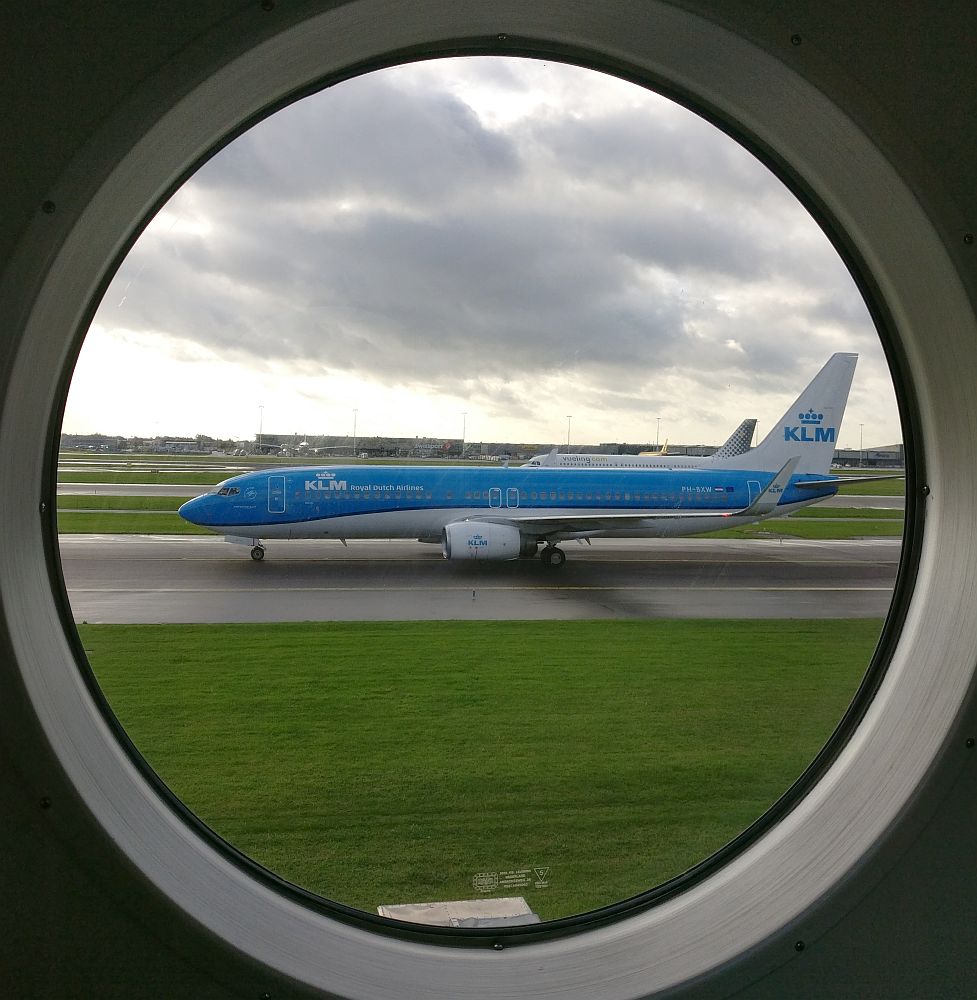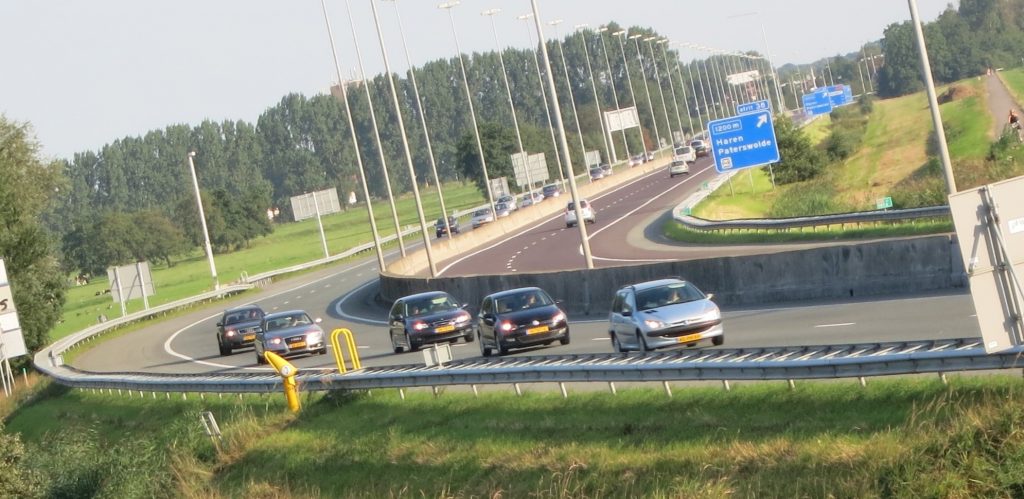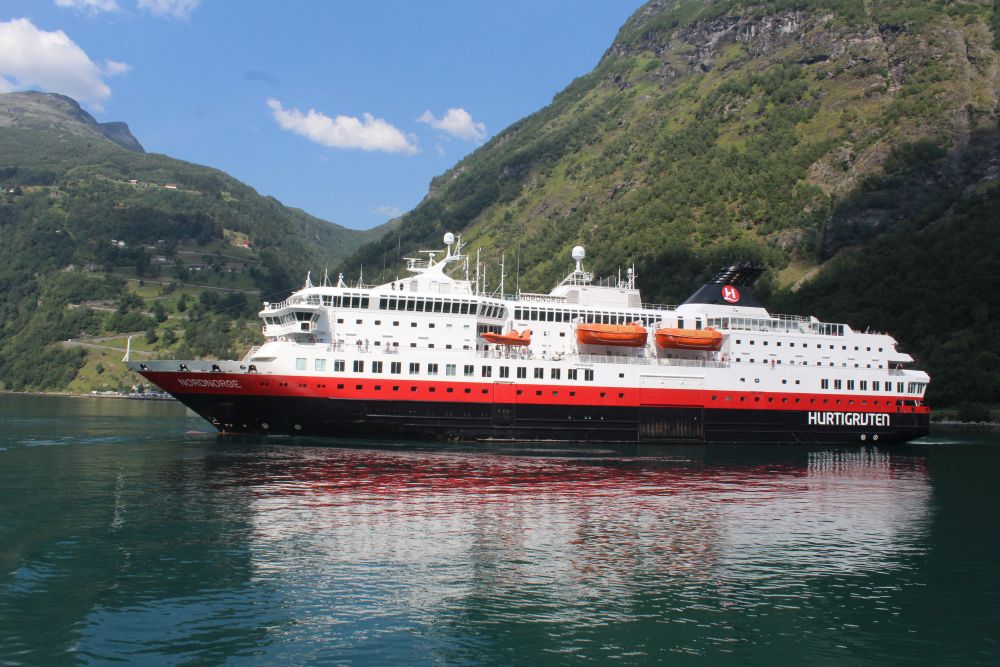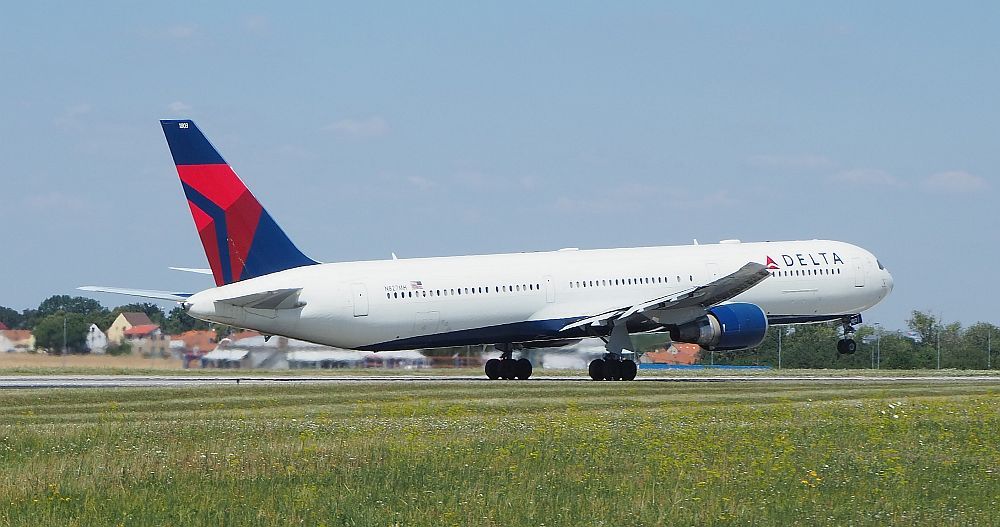Sustainable travel tips: Part 2 – Land or sea
In my recent article about reducing your carbon footprint while flying, I focused on the fact that many of us still want to fly, but at the same time feel guilty about it. We can at least in part assuage that guilt by paying for carbon offsets and, as I argued in the article, paying for carbon removal.

Anyway, that’s not what this article is about. I’d like to continue the series with more sustainable travel tips: looking at other ways to reduce one’s carbon footprint while we travel from place to place. This article focuses on land and sea transportation because that’s the biggest-ticket item for travelers (besides flying) in terms of production of greenhouse gases.
Disclosure: This article contains affiliate links. If you click on one and make a purchase, I will get a small commission. This will not affect your price.
Taking the train
In that last article I looked at flying and listed ways to reduce your carbon footprint when you fly. But the fact is that often flying isn’t necessary at all, while train travel is far less polluting. Look at this chart by Our World in Data and you’ll see what I mean. Eurostar is a high-speed train system in Europe, and has the smallest carbon footprint of all the forms of transportation listed.

Isn’t flying faster?
I once calculated how long it would take to get to London from my home in Groningen, in the Netherlands. The flight from Schiphol Airport to London takes about an hour. Sounds short, right? Nothing could beat that!
Wrong. A flight isn’t just a flight. A flight includes:
- The time it takes to get to the airport. For me, that’s 15 minutes of walking to the train station and two hours and 15 minutes on the train to get to Schiphol Airport.
- Arriving at the airport long before your flight. The rule of thumb has always been that you should aim to arrive at the airport two hours early. Nowadays many airlines are recommending three hours because of additional delays due to checking Covid tests, shortages of personnel at security, etc.
- The flight. In this case it’s one hour long.
- Getting to wherever you’re going on arrival. Let’s assume I need to get into the center of London. My flight might land at Stansted, Luton or Gatwick. The train from each of these would take 50 minutes, 40 minutes or 30 minutes respectively.

Now my trip is six-seven hours long at least, and that’s not counting wait time at train stations, going through customs and immigration in each airport, or getting to my hotel in the center of London.
What if I take the train?
Going by train is much more environmentally friendly. It’s also, for me, with my fear of flying, much more pleasant and relaxed. How long would it take?
To get to the train station would take me the same 15 minutes or so. The shortest trip to London St. Pancras from my city takes 7 hours and 15 minutes, which includes wait time at train stations when I have to change trains twice. If I want to just change trains only once, it’s 7 hours and 45 minutes. I’d still have to go through customs on arrival and get to my hotel.

Of course, the calculation will be different for everyone depending on where they live, but for me, the slightly longer travel time (minimum six hours vs. minimum seven and a half hours) is worth it, if only for the more relaxed travel. And I love sitting in a train watching the landscape pass by.
Which costs more?
Here’s the problem though: often that train journey costs more than the flight! Even if I count in the 25 euros it costs me to get to Schiphol, flying is generally cheaper unless I book very far ahead.
This should not be so. France recently banned shorter flights within the country, which is good, but it seems to me that the way to get people not to fly is to make train travel cheaper. As far as I can tell, the pricing is dynamic just like airline pricing, which means if you plan far ahead, you’ll get a cheaper price.
Some European countries are adding more high-speed lines between large cities, like the new sleeper train routes between Paris and Vienna and between Amsterdam and Zurich. The faster the train journey is, the more likely people will choose it over flying. I would love to see the same happen in the US. People will never choose the train for cross-country trips, but, for example, if the trains were more reliable, more frequent and faster between, say, Washington, DC and Boston or San Francisco and Los Angeles, fewer people would fly these short routes.
My sustainable travel tips for taking the train:
- Plan and book far ahead of time, if possible. Omio is a good site for booking trains.
- When you choose between transportation methods, be sure to factor in wait time, travel to and from airports and/or train stations, and time passing through customs, waiting to check in, etc. It’ll give you a more realistic comparison.
- Take express or high-speed trains with fewer stops than local trains, if possible. Besides getting you there faster, they’re a bit more efficient so their carbon footprint is a little smaller.
Taking the bus
If there are no trains available, you can often take a bus for long-distance journeys. The experience is much like a train trip, and definitely more relaxed than flying. It has the added advantage of usually being cheaper than the train. It has a lower carbon footprint than flying, but higher than the train; again, see the chart at Our World in Data. The disadvantage, besides that it’s not as environmentally-friendly as the train, is that the duration and comfort of the ride is dependent on traffic, road conditions and weather.
My advice for bus trips:
- Depending on the country and the bus company, the pricing can be dynamic as well. It might be to your advantage to book far in advance. Omio works for bus trips as well as train journeys.
- Like with trains, express buses that have fewer scheduled stops will have a slightly smaller carbon footprint. Of course, since they can’t control how often they have to stop in traffic, this advantage might disappear.
Taking the car
I love road trips. There’s a joyful freedom about them: stop where you want, move on when you want.
Believe me, I understand the desire to see the world. I want to see everywhere. But at least some of your travel could be road trips nearer to home and still offer you the range of new experiences you’re looking for. If you’re in the US, you have a huge variety of landscapes and cultures within road-trip distance. Add Canadian and Mexican destinations and you have even more.

If you’re in Europe, it’s probably just a few hours’ drive (or train trip!) to get to a new country where they speak a different language, live in different houses and eat different food than you’re used to. You can stay close to home and still enjoy different cultures and landscapes.
There are a lot of variables to looking at a car’s carbon footprint: the size/weight of the car, whether it runs on gas, diesel, or electricity, or if it’s a hybrid, as well as the number of people traveling. Its age and how well it’s maintained affects its efficiency too. A small gas-driven car carrying two or more people is less polluting in terms of CO2 production than a bus or a flight, but still worse than taking the train. Larger cars have a larger carbon footprint (per passenger) than buses. Even electric vehicles have a larger carbon footprint than the train!
Rental cars will, of course, cost more than driving your own, but, on the other hand, tend to be new and well-maintained, which makes them more energy-efficient, in general. This site is useful for comparing prices across a number of different rental car companies.
My sustainable travel tips for road trips:
- If you’re traveling with one or more other people, this could be a relatively sustainable way to travel.
- Think about making your next car an electric vehicle or a hybrid.
- Think about your fuel usage not just in terms of the miles you cover. Air conditioning, for example, increases your usage. At the same time, if you are driving fast on a highway, having the windows open can increase drag and make your engine work harder. Adjust these parameters as you drive in different conditions.
- Plan your route or follow a GPS so you don’t do more driving than necessary. The days of random driving just to see what’s around the next bend are gone!
- In bigger cities, park the car and walk or use the local public transportation. It’s more sustainable and far more interesting. It’s also less stressful than driving in an unfamiliar city.
- If you’re renting, choose the smallest car that can accommodate you, your companions, and your luggage.
What about taking a boat?
Obviously sailboats have the smallest carbon footprint, and I’ve heard great things about the experience of sailing in the Greek islands as part of a small sailboat tour, like this 8-day tour or this 10-day one in the Cyclades.
Big cruise ships are notorious for being wasteful of resources and polluting the ocean, but much has improved in the last few years. More and more cruise companies are moving to reduce their production of greenhouse gases.
Generally speaking, the best cruises are the ones that use smaller ships, such as Hurtigruten, which particularly targets sustainability. While Hurtigruten has begun to phase in hybrid-electric ships that can charge up in port, they’ve also implemented various measures to use power more efficiently for heating and hot water, as well as desalinating and purifying their own fresh water. Hurtigruten is based in Norway and runs the regular mail boats along the coast of Norway, but also does expedition cruises in places like Greenland, Iceland and Antarctica.

Lindblad Expeditions, which offers adventure cruises in many countries, has committed to becoming completely carbon neutral through reducing emissions and offsetting any emissions they do produce.
Boat Bike Tours has made the same commitment to carbon neutrality, offsetting any emissions they can’t reduce further. They run river tours in Europe that combine daily bicycling with small hotel boats.
There are undoubtedly other companies making similar promises; you should be able to find out on the company website.
While they may not be moving as quickly, even the giant cruise lines like Carnival and Royal Caribbean are working to reduce emissions and increase efficiency.
None of this makes a cruise guilt-free. Most cruise ships still produce even more carbon dioxide per passenger than airplanes do.
My advice if you still want to travel by boat:
- Smaller is generally better and sailboats are better than motor-driven.
- Do your research about the cruise line you’re considering. Think about encouraging moves toward sustainability by choosing a cruise line that is making real changes.
- Be frugal with energy use on board the ship: use air-conditioning sparingly; turn off lights and air-conditioning when you leave your cabin; and keep showers short.
- Don’t waste food. Take only what you’re actually going to eat.
If you must fly
Of course, traveling without flying just isn’t an option if you want to cross an ocean and have only a limited time. As I wrote in the earlier article, at least do the following:
- Book a non-stop flight.
- If there’s a stopover not far away, skip that part of the journey and take the train instead.
- Fly economy class.
- Choose a more eco-friendly airline such as one that uses the newest airplanes and tries to increase the use of biofuels.
- Use low-impact transport to the airport (train, preferably).
- Pack light.
- Pay for carbon offset.
- Pay for carbon removal.

Take longer trips
Another strategy is to plan a longer trip, no matter what form of transportation you take to get there. I don’t mean a longer distance, but a longer time. If there’s one thing the pandemic has shown us, it’s that long-distance work is perfectly doable. You could combine vacation with work in a way that is agreeable to your employer and that allows you to spend more time at your destination.
Slow travel is simply more efficient in terms of carbon footprint. Rather than taking a one-week trip to, say, England one year, and a one-week trip to Scotland the next year, combine the two and travel by train between them. By taking a single two-week trip and using ground transportation between places, you’ll cut your trip’s CO2 footprint almost in half: one roundtrip flight rather than two.
Better yet, plan a month-long trip, or even longer. If your job can be done remotely, this should be perfectly possible. Plan, for example, to take two weeks’ vacation time but spread that two weeks over four weeks. You work remotely for, say, four hours each weekday, then have the rest of your time free for sightseeing. Just make sure your accommodations have wifi and you’re all set! Use this link to find your accommodations.
Have you been taking sustainability into account when you plan your travel? Is there anything you’d add to this list of sustainable travel tips? If so, please add a comment below!
The next article in this occasional series will look at other smaller ways you can reduce your carbon footprint while traveling.

My travel recommendations
Planning travel
- Skyscanner is where I always start my flight searches.
- Booking.com is the company I use most for finding accommodations. If you prefer, Expedia offers more or less the same.
- Discover Cars offers an easy way to compare prices from all of the major car-rental companies in one place.
- Use Viator or GetYourGuide to find walking tours, day tours, airport pickups, city cards, tickets and whatever else you need at your destination.
- Bookmundi is great when you’re looking for a longer tour of a few days to a few weeks, private or with a group, pretty much anywhere in the world. Lots of different tour companies list their tours here, so you can comparison shop.
- GetTransfer is the place to book your airport-to-hotel transfers (and vice-versa). It’s so reassuring to have this all set up and paid for ahead of time, rather than having to make decisions after a long, tiring flight!
- Buy a GoCity Pass when you’re planning to do a lot of sightseeing on a city trip. It can save you a lot on admissions to museums and other attractions in big cities like New York and Amsterdam.
Other travel-related items
- It’s really awkward to have to rely on WIFI when you travel overseas. I’ve tried several e-sim cards, and GigSky’s e-sim was the one that was easiest to activate and use. You buy it through their app and activate it when you need it. Use the code RACHEL10 to get a 10% discount!
- Another option I just recently tried for the first time is a portable wifi modem by WifiCandy. It supports up to 8 devices and you just carry it along in your pocket or bag! If you’re traveling with a family or group, it might end up cheaper to use than an e-sim. Use the code RACHELSRUMINATIONS for a 10% discount.
- I’m a fan of SCOTTeVEST’s jackets and vests because when I wear one, I don’t have to carry a handbag. I feel like all my stuff is safer when I travel because it’s in inside pockets close to my body.
- I use ExpressVPN on my phone and laptop when I travel. It keeps me safe from hackers when I use public or hotel wifi.


